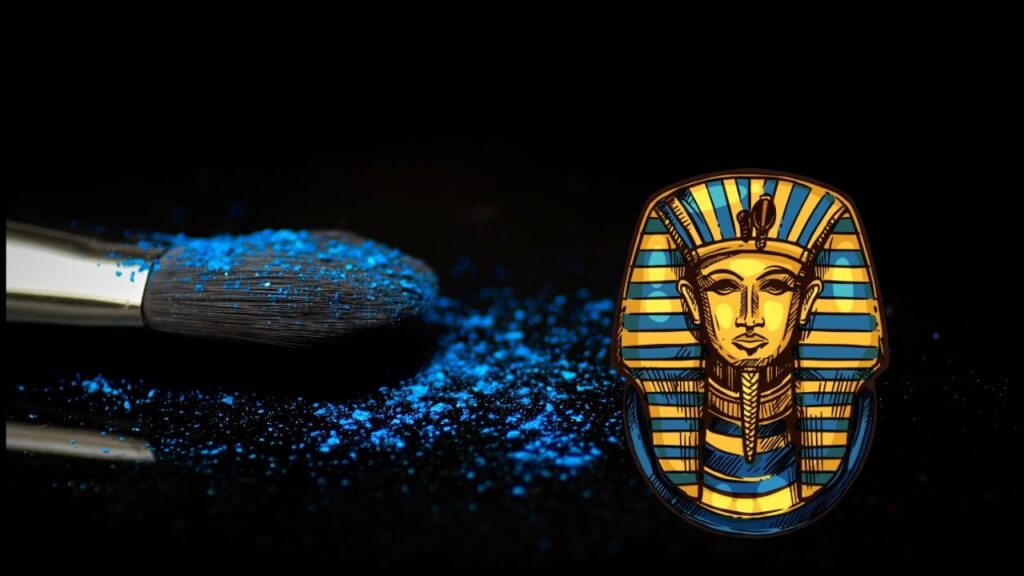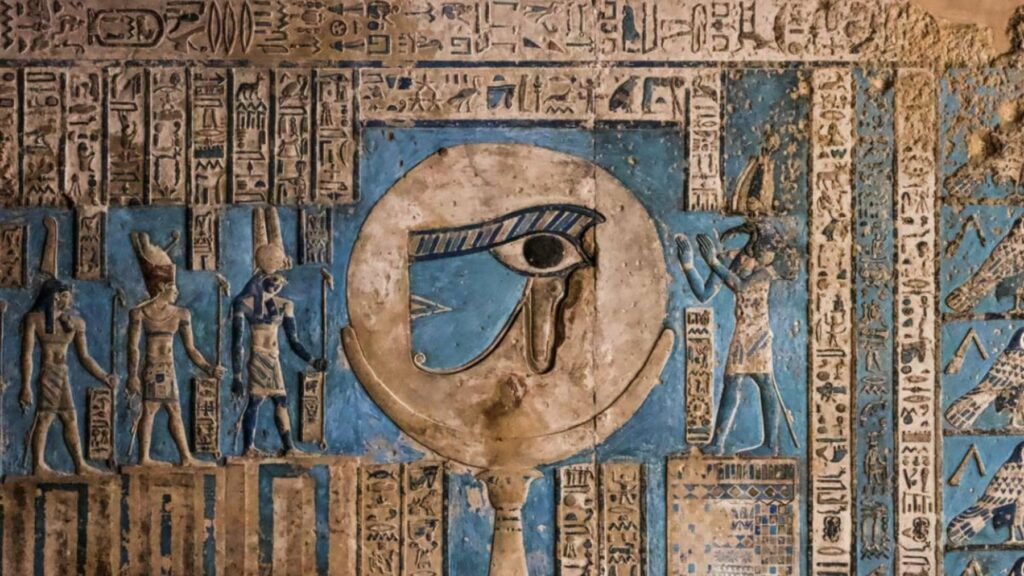
Scientists Successfully Recreate Egyptian Blue: Imagine walking through the tombs of ancient Egypt, with vivid blue colors adorning the walls of long-lost chambers. The art seems to jump out at you, glowing almost as if it’s alive. This remarkable blue hue, known as Egyptian Blue, has fascinated historians, scientists, and artists for centuries. Now, in a groundbreaking achievement, scientists have successfully recreated this ancient pigment, the first-ever synthetic color produced by humanity. This breakthrough not only provides a new window into the past, but also has modern applications with exciting potential. In this article, we’ll dive into the fascinating history of Egyptian Blue, the steps scientists took to bring this long-lost color back to life, and how it might be used in the future. Whether you’re an art enthusiast, a history buff, or someone interested in science, you’ll find valuable insights into how ancient knowledge is being rediscovered today.
Scientists Successfully Recreate Egyptian Blue
The successful recreation of Egyptian Blue is a testament to the brilliance of ancient Egyptian civilization. This vibrant blue pigment, which has fascinated us for thousands of years, is more than just a color—it’s a piece of history brought back to life through modern science. The discovery has opened up exciting possibilities for its use in everything from forensic science to high-tech materials. As we continue to uncover the secrets of the past, we not only gain a greater appreciation for ancient cultures but also find inspiration for innovation in the present.
| Topic | Details |
|---|---|
| What is Egyptian Blue? | A calcium copper silicate pigment used in ancient Egypt, known for its vibrant blue color and luminescent properties. |
| Recreation Process | Scientists recreated the pigment using raw materials like copper compounds and lime, heated to over 1,000°C. |
| Modern Applications | The pigment could be used in fields like fingerprint detection, anti-counterfeiting, and superconductors. |
| Historical Significance | Egyptian Blue was used for thousands of years, appearing in murals, tombs, and statues, symbolizing wealth and divinity. |
| Science Behind the Pigment | The pigment is made from a unique combination of copper, calcium, and silica that gives it its distinctive color and infrared luminescent properties. |
For centuries, Egyptian Blue was one of the most revered pigments in the ancient world. It was used in everything from temple murals to the famous statues of gods and pharaohs, giving a majestic feel to Egyptian art. Despite its widespread use, however, the secret behind its creation had been lost over time. Today, scientists have managed to crack the code and recreate the pigment with modern technology, breathing new life into an ancient legacy.
What is Egyptian Blue?
Egyptian Blue is more than just a color—it’s a symbol of ancient technological prowess. This synthetic pigment, known scientifically as cuprorivaite (a calcium copper silicate compound), was the first of its kind in human history. The ancient Egyptians used it for centuries, decorating everything from tombs to statues and even mummified sarcophagi. Unlike natural blue pigments like lapis lazuli, which were imported from far-off places like Afghanistan, Egyptian Blue was made locally, showcasing the advanced chemistry of the ancient Egyptians.
The real magic of Egyptian Blue is its luminescent property. When exposed to visible light, the pigment emits infrared light, a feature that set it apart from other colors of the time. This made it not only valuable in art but also in areas like science and technology.

The History and Evolution of Egyptian Blue
Egyptian Blue wasn’t just an artistic tool—it was a cultural symbol. The color was associated with divinity and power, and it frequently appeared in artworks that depicted the gods and the afterlife. Pharaohs, in particular, used the pigment in their tombs, statues, and royal artifacts to reinforce their divine status. The color itself became an emblem of the divine and the eternal, often used in depictions of the gods, such as the iconic blue of the Egyptian goddess Hathor.
Over time, the pigment spread across other parts of the Mediterranean, influencing art and culture far beyond Egypt. The Greeks, Romans, and even the early civilizations of Mesopotamia began to use Egyptian Blue, solidifying its status as the color of the elite.
Despite its widespread use, Egyptian Blue eventually disappeared from history. The formula for its creation was lost after the fall of the ancient Egyptian civilization, and for centuries, the pigment’s secrets remained a mystery.
How Egyptian Blue Was Lost and Rediscovered
The formula for Egyptian Blue was lost over time, and scholars struggled to figure out how it was created. For centuries, its unique qualities—like the way it glows under infrared light—were a mystery. In recent years, a group of dedicated scientists took on the task of rediscovering the ancient recipe.
By studying ancient artifacts and combining them with modern chemical analysis techniques, scientists were able to reverse-engineer the process. Researchers at Washington State University, the Smithsonian, and the Carnegie Museum of Natural History used high-tech methods, such as scanning electron microscopy and X-ray diffraction, to analyze the composition of ancient blue pigment remnants. Through this advanced technology, they were able to recreate the precise formula, finally unveiling the ancient Egyptians’ secret.
The Importance of Technology in the Discovery
The use of modern technology played a crucial role in cracking the ancient code. With tools like scanning electron microscopy, scientists were able to analyze ancient pigment samples on a microscopic level. These methods allowed them to determine the exact composition of the pigment and how it interacted with light. The advancements in chemical analysis also enabled researchers to simulate the ancient process with remarkable accuracy.

The Recreation of Egyptian Blue
Fast forward to today, and the pigment that was once lost to history has been successfully recreated by a team of scientists. Led by researchers from Washington State University, the Carnegie Museum of Natural History, and the Smithsonian Institution, the process involved a detailed study of ancient recipes and materials.
The Science Behind the Process
The key to recreating Egyptian Blue lay in understanding its unique composition. The team used raw materials like silicon dioxide (silica), copper compounds (like malachite and azurite), calcium oxide (lime), and sodium carbonate (soda). These materials were mixed and heated to around 1,000°C (1,832°F), a process that mimicked the ancient method. The heating process takes several hours, with the pigment changing color as it cools.
By adjusting the proportions of these ingredients and experimenting with different heating times, the researchers were able to produce a variety of blue hues, with the most vibrant results requiring the least amount of blue-colored components. The result is an astonishingly pure and vibrant blue pigment, just as the ancient Egyptians might have seen it.
Why Is This Significant?
Not only does the successful recreation of Egyptian Blue shed light on the ingenuity of ancient civilizations, but it also offers insights into the broader field of chemistry and materials science. For centuries, people thought the Egyptians might have discovered something even more advanced than we initially believed, and this discovery has confirmed that they were indeed ahead of their time.
How Was It Done?
- Selecting the Ingredients: Researchers identified the right combination of raw materials. Copper and calcium were central to the process, as they are critical to the creation of the blue hue.
- Heating the Mixture: The mixture of silica, copper compounds, and lime was heated to high temperatures (1,000°C). This simulates the ancient process, where the ingredients would have been heated in kilns or furnaces.
- Adjusting Time and Temperature: The team tested different heating times, from one hour to as long as 11 hours, to see how it affected the color intensity and the quality of the final product.
- Creating the Final Pigment: After cooling, the pigment was ground into a fine powder, just like the ancient Egyptians would have done.
The result? A beautiful, vibrant blue pigment that mimics the famous hue seen in ancient Egyptian art.

Modern Applications of Egyptian Blue
While the recreation of Egyptian Blue is exciting for its historical significance, it also has significant practical uses in today’s world. Its unique properties make it a valuable tool in modern science and technology.
1. Fingerprint Detection: The pigment’s ability to emit infrared light when exposed to visible light makes it ideal for use in forensic science, especially for fingerprint detection. The pigment’s glow can reveal hidden fingerprints on various surfaces, offering a new method for crime scene investigation. This unique property could revolutionize forensic techniques, making it easier to detect and collect evidence in ways that were previously impossible.
2. Anti-Counterfeiting Measures: Egyptian Blue’s luminescent properties could be harnessed in the fight against counterfeiting. By embedding the pigment in products like currency or luxury goods, manufacturers can create a visible but hard-to-replicate security feature. This would allow for an additional layer of protection against the growing problem of counterfeit products in markets around the world.
3. Superconductors: The unique chemical structure of Egyptian Blue might make it useful in the development of high-temperature superconductors. Superconductors are materials that can carry electrical current without resistance, and they have a range of applications from energy storage to transportation. As the demand for efficient energy solutions grows, the properties of Egyptian Blue could play a key role in developing cutting-edge technologies.
4. Art Conservation: As the pigment is used more widely in modern art and historical restorations, it offers a new tool for art conservationists, helping to preserve and even restore ancient artworks with greater accuracy. Egyptian Blue has been shown to endure the test of time, and using it in restoration projects could ensure that artworks retain their vibrancy and historical significance.
The Role of Modern Technology in Scientists Successfully Recreate Egyptian Blue
Today’s advancements in technology have played a crucial role in the recreation of ancient pigments like Egyptian Blue. Through methods such as scanning electron microscopy, X-ray diffraction, and advanced chemical analysis, scientists can now study ancient artifacts at a level of detail that was impossible even just a few decades ago. These tools have not only allowed researchers to uncover the secrets of ancient pigments but have also opened the door to new discoveries in material science, chemistry, and history.
5,000-Year-Old Meteorite Beads Found in Egypt—Could This Be the Birth of Human Metalwork?
Stunning Discovery: Egyptians Identified Meteorites as Sky Metal Millennia Ago
Metal of the Gods? Ancient Egyptians Worshipped This Meteoric Treasure Like Gold











